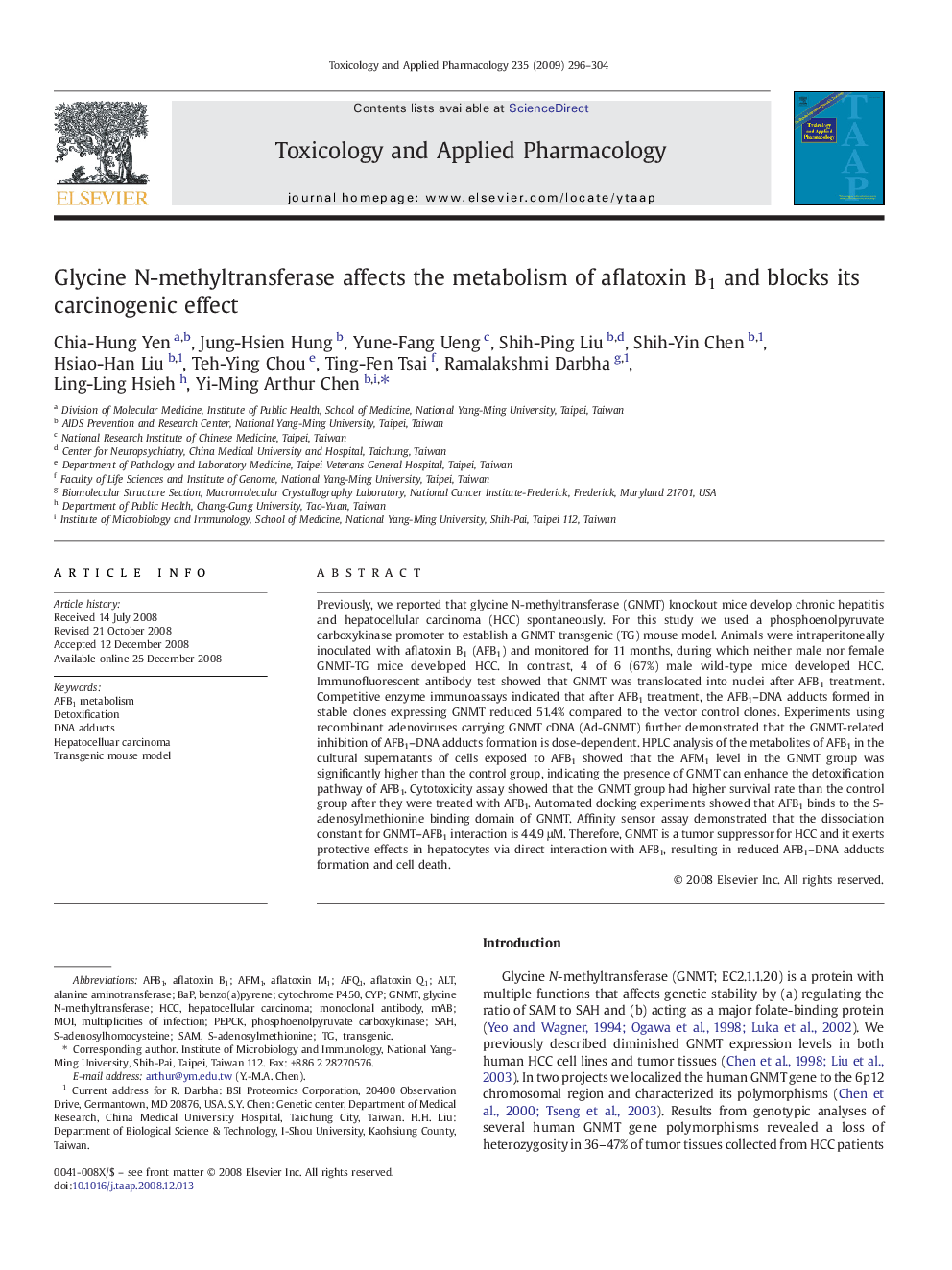| کد مقاله | کد نشریه | سال انتشار | مقاله انگلیسی | نسخه تمام متن |
|---|---|---|---|---|
| 2569994 | 1128562 | 2009 | 9 صفحه PDF | دانلود رایگان |

Previously, we reported that glycine N-methyltransferase (GNMT) knockout mice develop chronic hepatitis and hepatocellular carcinoma (HCC) spontaneously. For this study we used a phosphoenolpyruvate carboxykinase promoter to establish a GNMT transgenic (TG) mouse model. Animals were intraperitoneally inoculated with aflatoxin B1 (AFB1) and monitored for 11 months, during which neither male nor female GNMT-TG mice developed HCC. In contrast, 4 of 6 (67%) male wild-type mice developed HCC. Immunofluorescent antibody test showed that GNMT was translocated into nuclei after AFB1 treatment. Competitive enzyme immunoassays indicated that after AFB1 treatment, the AFB1–DNA adducts formed in stable clones expressing GNMT reduced 51.4% compared to the vector control clones. Experiments using recombinant adenoviruses carrying GNMT cDNA (Ad-GNMT) further demonstrated that the GNMT-related inhibition of AFB1–DNA adducts formation is dose-dependent. HPLC analysis of the metabolites of AFB1 in the cultural supernatants of cells exposed to AFB1 showed that the AFM1 level in the GNMT group was significantly higher than the control group, indicating the presence of GNMT can enhance the detoxification pathway of AFB1. Cytotoxicity assay showed that the GNMT group had higher survival rate than the control group after they were treated with AFB1. Automated docking experiments showed that AFB1 binds to the S-adenosylmethionine binding domain of GNMT. Affinity sensor assay demonstrated that the dissociation constant for GNMT–AFB1 interaction is 44.9 μM. Therefore, GNMT is a tumor suppressor for HCC and it exerts protective effects in hepatocytes via direct interaction with AFB1, resulting in reduced AFB1–DNA adducts formation and cell death.
Journal: Toxicology and Applied Pharmacology - Volume 235, Issue 3, 15 March 2009, Pages 296–304